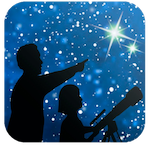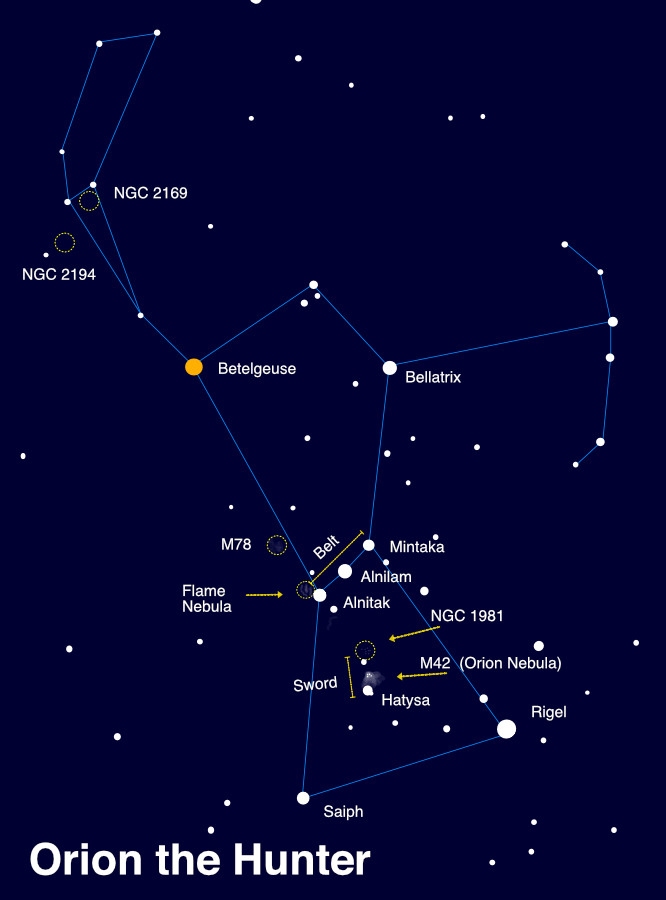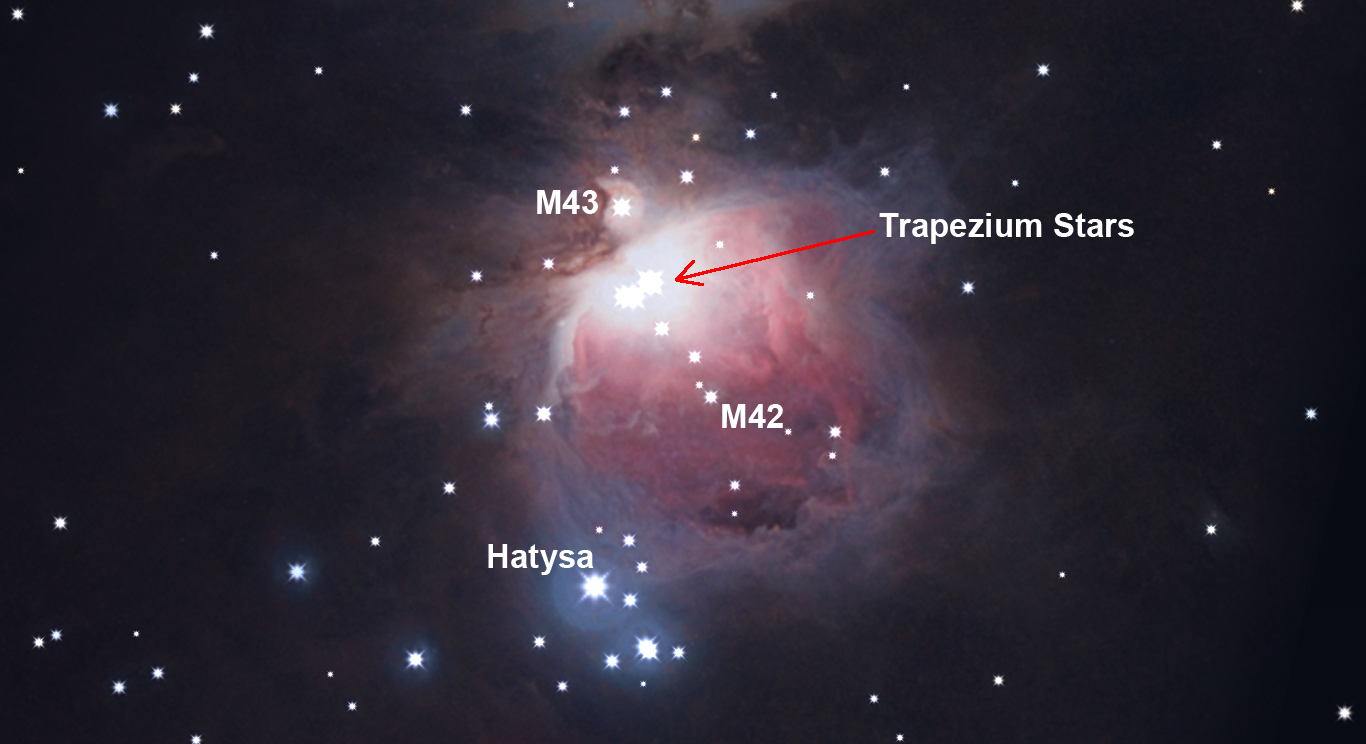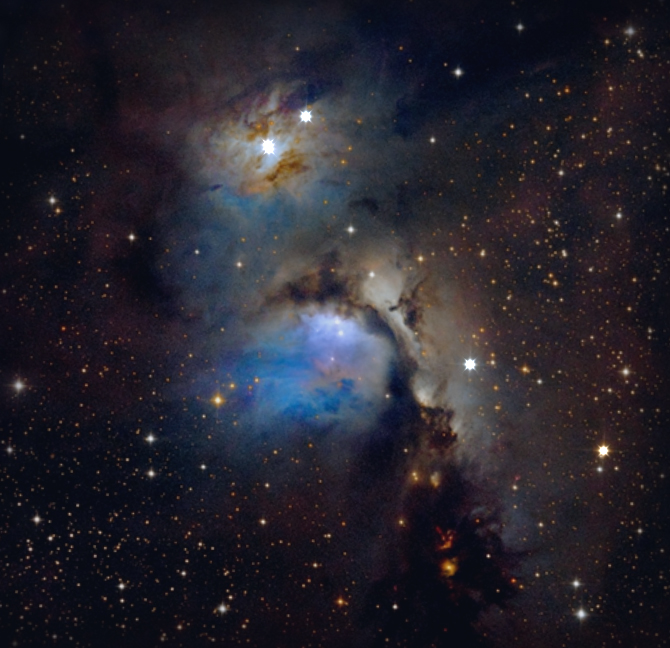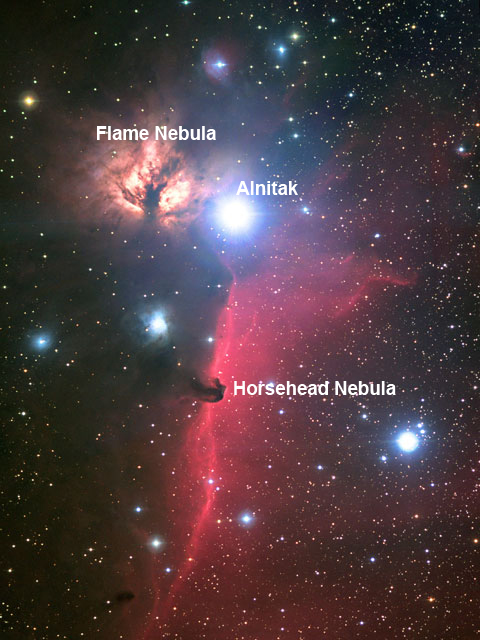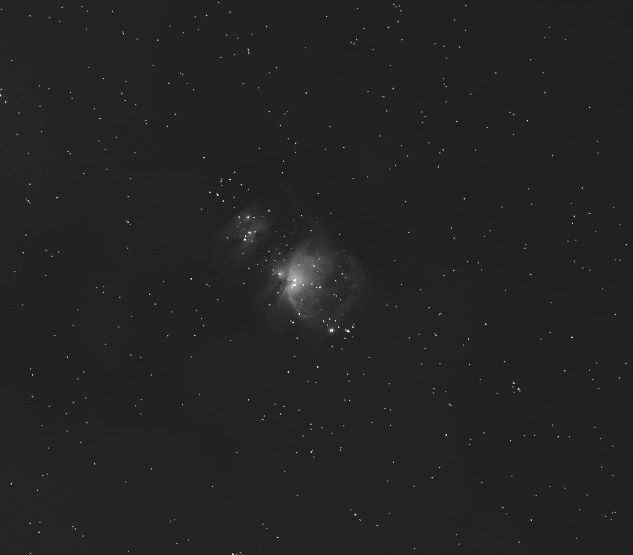Hunting the Hunter: Observing Orion
This article is distributed by NASA Night Sky Network
By David Prosper
If you are outside early on a clear April evening, it’s hard not to notice one distinctive star pattern lower in the southwest: Orion! Perhaps you’ve received a new telescope, camera, or binoculars, and are eager to test it out. Orion, being large, prominent, and full of interesting, bright objects, is a perfect constellation to test out your new equipment and practice your observing skills – for beginners and seasoned stargazers alike.
In Greek mythology, Orion is a strong hunter, with numerous legends about his adventures. Being such a striking group of stars, cultures from all around the world have many myths about this star pattern. There are so many that we can’t list them all here, but you can find a wonderful interactive chart detailing many cultures’ legends on the Figures in the Sky website at figuresinthesky.visualcinnamon.com .
What sights can you see in Orion with a telescope?
Look above the variable orange-red supergiant ”shoulder star” Betelgeuse to find the stars making up Orion’s “club,” then move across from Betelgeuse towards the bright star Bellatrix (Orion’s other “shoulder”) and the stars of his bow and arrow – both essential tools for the Hunter.
Many interesting sights lie near Orion’s “belt” and “sword.” Orion’s belt is made up of three bright giant stars forming an evenly spaced line: Alnitak, Alnilam, and Mintaka. Move from the belt stars towards the stars Rigel and Saiph (Orion’s “feet” or “knees”) to arrive at Orion’s distinctive Sword, parts of which may appear fuzzy to your unaided eyes. Binoculars reveal that fuzz to be the famed Orion Nebula (M42), perched right next to the star Hatysa! Diving in deeper with a telescope will show star clusters and more cloud detail around the Nebula, and additional magnification brings out further detail inside the nebula itself, including the “baby stars” of the Trapezium and the next-door neighbor nebula M43.
Want to dive deeper? Dark skies and a larger telescope will help to bring out the reflection nebula M78, the Flame Nebula (NGC 2024), along with many star clusters and traces of dark nebula throughout the constellation. Very careful observers under dark clear skies may be able to spot the dark nebula known as the Horsehead, tracing an equine outline below both the Belt and the Flame Nebula. Warning: the Horsehead can be a difficult challenge for many stargazers, but very rewarding.
This is just a taste of the riches found within Orion’s star fields and dust clouds; you can study Orion for a lifetime and never feel done with your observations. To be fair, that applies for the sky as a whole, but Orion has a special place for many. New telescopes often focus on one of Orion’s treasures for their first test images. You can discover more of NASA’s research into Orion’s stars – as well as the rest of the cosmos – online at nasa.gov.
IMPORTANT NOTE: The images above were taken with cameras more sensitive than the human eye. When looking through a small telescope you will not see as much detail and you’ll see little to no color. Also, what you see with your eyes in a telescope will usually be smaller than the above images.
